A message from Electrical Builders, Ind.
America’s Top Performing Nuclear Plants Rely on Electrical Builders, Industries to Expand and Extend the Life of Their Critical Electrical Assets
The ANS Nuclear Cafe is a blog owned and edited by the American Nuclear Society. Information contained on the ANS Nuclear Cafe has been provided by numerous sources. Therefore, the American Nuclear Society assumes no responsibility or liability for the accuracy of information contained herein. DISCLAIMER: The views expressed in posted articles do not necessarily reflect the views of the American Nuclear Society. The views expressed here are those of the individual authors. ANS takes no ownership of their views. The American Nuclear Society assumes no responsibility or liability for any use or operation of any methods, products, instructions, or ideas contained on this site.

A message from Electrical Builders, Ind.
America’s Top Performing Nuclear Plants Rely on Electrical Builders, Industries to Expand and Extend the Life of Their Critical Electrical Assets
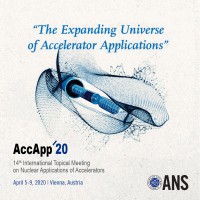 The 14th International Topical Meeting on Nuclear Applications of Accelerators (AccApp'20) is being organized by the Accelerator Applications Division (AAD) of the American Nuclear Society in cooperation with the International Atomic Energy Agency. AccApp '20 will be held April 5-9 at IAEA headquarters in Vienna.
The 14th International Topical Meeting on Nuclear Applications of Accelerators (AccApp'20) is being organized by the Accelerator Applications Division (AAD) of the American Nuclear Society in cooperation with the International Atomic Energy Agency. AccApp '20 will be held April 5-9 at IAEA headquarters in Vienna.
Friends and colleagues - Usually I write about "the old days" of nuclear in this space but something came up in current events that really sticks in my craw, and I have to shine the spotlight on it here. So please indulge me and read along. (We'll get back to "the old days" soon enough, don't you worry!)
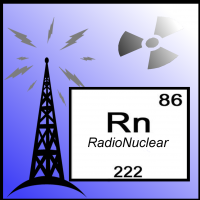 Thank you for joining us for Episode 28 of RadioNuclear! This week, we talk about the recent false alarm involving the Pickering Nuclear Generating Station in Canada and about an opinion piece over a recent MIT study claiming that nuclear is not needed for deep decarbonization. We also discuss about why some regions of the world have an easier time building nuclear plants, when compared to other regions of the world.
Thank you for joining us for Episode 28 of RadioNuclear! This week, we talk about the recent false alarm involving the Pickering Nuclear Generating Station in Canada and about an opinion piece over a recent MIT study claiming that nuclear is not needed for deep decarbonization. We also discuss about why some regions of the world have an easier time building nuclear plants, when compared to other regions of the world.
Over the years that I've been writing for ANS, I've managed largely through that association to come into possession of a number of fairly odd things. I mean, all of us have things that the "normal person" (and by that I mean non-nuclear) would find pretty strange, but I'm telling you I have some strange things that are a bit further out than garden-variety strange. I'd like to tell you about just two.
Fall 2019 was a banner period for five developers of small modular reactors. Here is a roundup of their announcements as well as some information about their plans for the future.
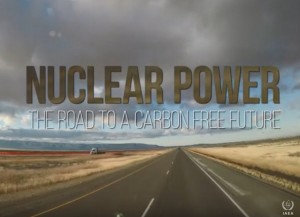 Nuclear energy provides 10% of the world's electricity. To counter climate change, we need more clean and reliable energy sources. Currently, 30 countries operate nuclear power plants, and more than two dozen others are looking at nuclear energy to meet their power and climate needs. In the U.S., more than 30 towns and cities look to go carbon-free, and they're taking a chance on small modular reactors (SMRs) to achieve their goals. Enjoy this short video from the International Atomic Energy Agency (IAEA) to learn more about how nuclear power can help bring our world toward a carbon-free future.
Nuclear energy provides 10% of the world's electricity. To counter climate change, we need more clean and reliable energy sources. Currently, 30 countries operate nuclear power plants, and more than two dozen others are looking at nuclear energy to meet their power and climate needs. In the U.S., more than 30 towns and cities look to go carbon-free, and they're taking a chance on small modular reactors (SMRs) to achieve their goals. Enjoy this short video from the International Atomic Energy Agency (IAEA) to learn more about how nuclear power can help bring our world toward a carbon-free future.
As we start 2020 I find myself thinking about the slew of articles and posts that I'm seeing about SMR's - that is to say, Small Modular Reactors. Many are written by knowledgeable people, many not so much - but in some places I've started to see some references to the pollution caused by heavy ocean shipping and whether or not we could use SMR's to stop that by converting ships to nuclear power. Well, let's not rush into this - after all, all of the "consideration" phase was done once before and there was in fact ocean-going hardware. So, keeping in mind that it's the holiday season, I'd like to just offer up a quick look at what was considered and what was surprisingly found out to be true in regards to nuclear cargo or passenger ships in the 1950's and 1960's. I hope this is new for many of you!
In deference to the holiday season, I've decided to run something lighter than usual - an almost-listicle describing five historic nuclear facts that might surprise people in the field young and old!
In the not-so-distant 20th century past, our planet was in an uncertain new-world order. The second of two major wars had dramatically reshaped the landscape of the world's nations. It was not by any means assured that the extraordinary nuclear process of fission, which itself had been discovered mere years before the second war's end, would be successfully utilized for anything but the tremendous and frightening powers realized in thermonuclear warheads. In the years following, a humble project materializing out of the National Reactor Testing Station in Idaho was to challenge that assertion and demonstrate that nuclear fission could indeed be a commercial, peaceful source of electrical power for civilizations around the globe.
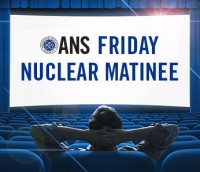 After the 2011 Fukushima incident shook the confidence of the people of Europe. It shook their confidence in the technology. Switzerland actually voted to phase out their nuclear power. ANS member & GA Section chair Juan Villarreal gives a Power Talk on the "Swiss Nuclear Brexit."
After the 2011 Fukushima incident shook the confidence of the people of Europe. It shook their confidence in the technology. Switzerland actually voted to phase out their nuclear power. ANS member & GA Section chair Juan Villarreal gives a Power Talk on the "Swiss Nuclear Brexit."
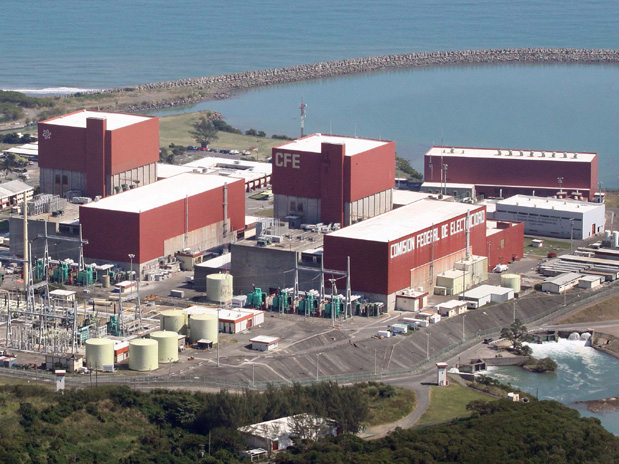
Mexico's Laguna Verde nuclear plant sits at a beautiful location in Veracruz. This plant has operated successfully for three decades. Photo courtesy Morrison-Knudsen / United Engineers & Constructors.
Nuclear power never really did take off in Mexico; although the populous nation seriously considered nuclear energy for a variety of purposes it ended up with just a single commercial plant. It is beginning to look like that might change, sooner or later.
What to expect from this article: (4 minutes read)
December 5 marks the anniversary of the launch of the first nuclear powered icebreaker, the Lenin, in what at that time was the Soviet Union. The job that icebreakers perform is among the very most demanding that any type of seagoing vessel endures due to the environment, the remoteness, and the tremendous stresses on the ship itself. As it turns out, it's a perfect application for nuclear energy. Let's take a look at this historic ship, its design and the operation of icebreakers with a variety of photos from my library.
On November 21, 1905, exactly 114 year ago, Albert Einstein first published the well-known equation E=mc². You might think of nuclear power when seeing E=mc², but here's something to think about. What does E=mc² really mean and how does it relate to your cup of coffee?
The ANS Winter Meeting has been awesome. Everyone is talking about this fantastic meeting and the excellent session offerings! Were you unable to attend the ANS Winter Meeting in Washington, D.C? If so, we have the video from the Monday morning Opening Plenary to share! ANS President Marilyn Kray started off the event and then introduced the new Executive Director/CEO Craig Piercy. And of course, don't miss out on the great Opening Plenary speakers:
It's no secret that public will and a great deal of marketing have combined to legislate large amounts of renewable energy onto parts of the US grid (and indeed grids around the world.) The challenges that this brings are particularly severe for nuclear energy, which is commonly threatened when expected to operate in an environment where everything else has to "get out of the way" for renewables. The question is: Can nuclear play a role if it's coupled with some kind of energy storage? The early answers seem to be well into the "yes" range, as was explained today during an excellent technical session featuring a number of speakers.
The ultimate survival of TEPCO as a long term profitable business continues to be in question as the company struggles with the ongoing decommissioning of the Fukushima Daiichi plant. In recent times the company has also stated that it will dismantle the other, more southerly nuclear station in Fukushima prefecture. This leaves TEPCO with only one nuclear plant it can return to operation, and from which it can generate revenue in order to survive (although it has considerable other generating assets). Will that happen? The answer is only a "maybe," although the company is certain it's "yes."
This week's enhanced Friday Matinee feature is a fascinating, albeit short, compilation of television clips that were made at Sheldon Station in Nebraska. This pioneering power station included a very modern coal fired facility and the Hallam Nuclear Generating Station, as one interconnected and combined facility. The original idea was that coal could be used when the nuclear facility was not operating, although it was later planned to add another turbine generator to allow both ends (as it were) to run continuously. The sodium-cooled Hallam facility was shut down before this happened.